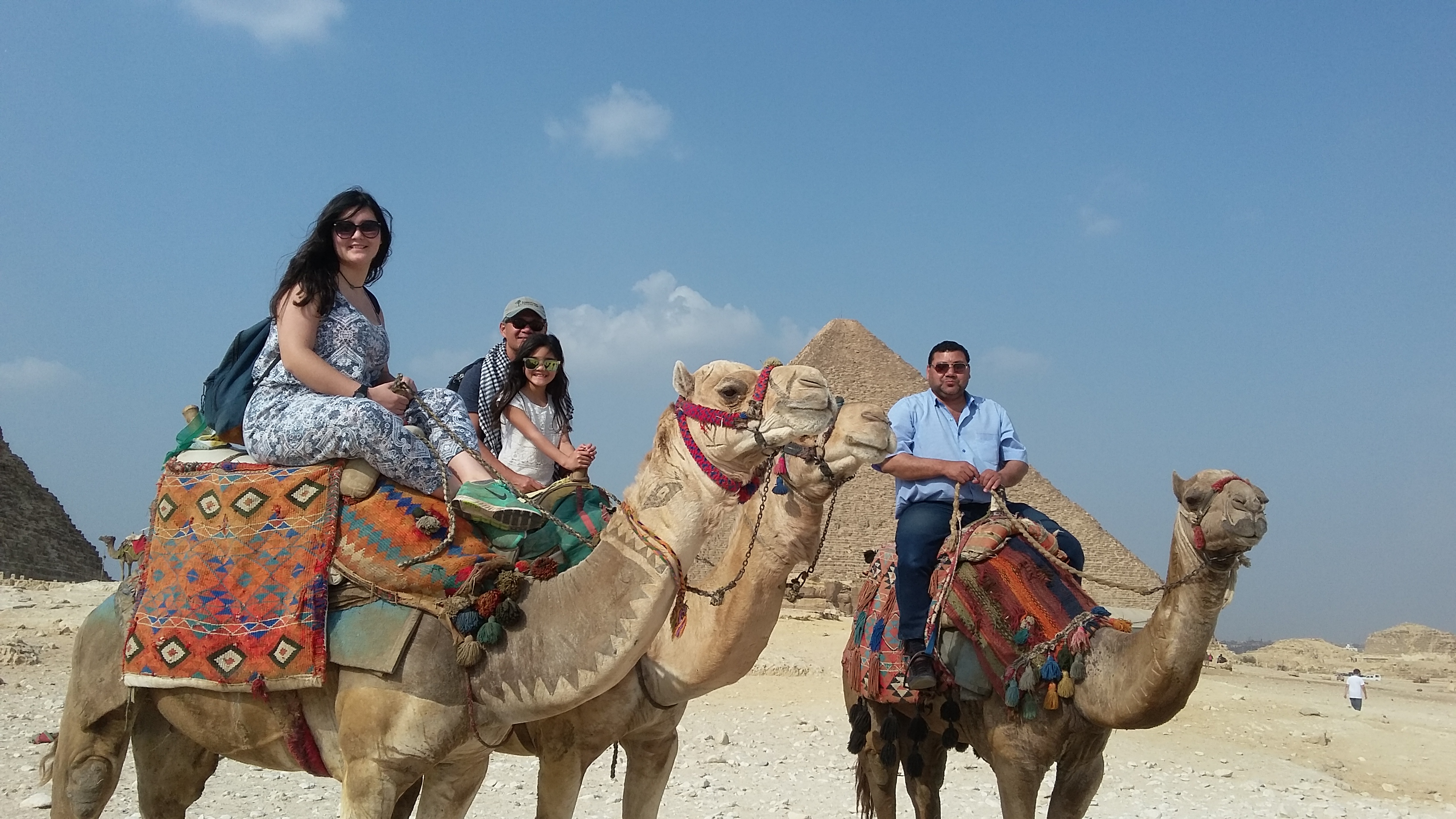Located around the Nile in the South of Egypt, Aswan has a rich history and a lot of architectural gems to visit. We prepare a selection of the top 9 things not to miss in Aswan, Egypt.
1. Visit the Ruins of Abu

The ruins of Abu, in the Elephantine island, are a traditional ruins and mark the island’s long history from around 3000 BC to 14th century AD. All the ruins are numbered for easy discovery. The largest of them is the partially renovated Temple of Khnum (plaque numbers 6, 12 and 13).
Highlights of the ruins include a small 4th-dynasty pyramid that we believe was built by Sneferu (2613–2589 BC); a chapel (number 15), reconstructed from the Temple of Kalabsha (that is now just south of the High Dam); a renovated 18th-dynasty temple (number 2) dedicated to goddess Satet; and the temple of Khnum.
Make sure to check out Aswan’s Nilometer, which measures the Nile rise and fall with stone-hewn wells, helping to predict the success of the annual flow and harvest.
Ruins of Abu
Address: Elephantine island, Aswan, Egypt
2. Visit the Philae Temple

Philae was originally near the expansive First Cataract of the Nile in Upper Egypt and was the site of an Egyptian temple complex, but it has been disassembled and moved to higher grounds to avoid the Nile’s rising waters destroying this archeologic place. Philas was moved lock-stock-and-barrel from its original home on Philae Island to nearby (higher) Agilika Island where it sits today, 12 kilometers (7.45 miles) south of Aswan.
Philae temple is dedicated to the goddess Isis and occupies about one quarter of the full island. The island is also home to the Temple of Hathor, the Kiosk of Trajan, and various other buildings from the Roman and Byzantine periods.
Philae temple
Address: Aswan, Aswan Governorate, Egypt
3. Visit the Tombs of the Nobles

These rock tombs located on the West Bank’s cliffs used to be where Elephantine island’s governors, priests, and other grandees were buried during the Old and Middle Kingdoms.
The tombs are accessible via steep staircases close to Gharb Aswan’s docks.
Despite being a less-visited historical site (great for you to have beautiful pictures without too many tourists!), this site, also called Qubat El Hawa, was noteworthy during the Middle and Old Kingdoms. The walls are very well conserved and display the daily lives of ancient Egyptians.
We recommend visiting the tombs of Mekho, prince of the 6th dynasty of the Old Kingdom; tomb of Sabni, the son of Mekho (this tomb is is actually an extension of the tomb of Mekho) and the tomb Harkhuf, one of the first rulers of Elephantine island to be buried in these tombs.
Tombs of the Nobles
Address: Qesm Al Wahat Al Khargah, New Valley Governorate, Egypt
4. Admire the Unfinished Obelisk
This is a 41 meters (0.02 miles) long and 4 meters (0.002 miles) wide piece of stone is believed to have been abandoned because of a crack in it. If the obelisk was completed, it would have been the largest ever.
Unfinished Obelisk
Address: Sheyakhah Oula, Qism Aswan, Aswan Governorate, Egypt
Aswan Tour Guide
Aton
With this private arrival transfer you will save your time, effort and avoid any hassle or trouble dealing and bargaining with cab drivers. No more rip-off or cheats with this punctual, smooth transfer.Save time and avoid hassle by pre-booking your transportation between Cairo Airport and your hotel in Cairo or Giza. you will need to get your luggages, go through the final security check, and then you will see your driver outside.
Tours by Aton
Aswan Tour Guide
Monem Madbouly
5. Visit the 7th century Monastery of St Simeon

This 7th-century monastery is located in the West Bank in honor of the local saint Anba Hedra, who renounced the world on his wedding day. The monastery was rebuilt in the 10th century and dedicated to St Simeon. Due to a shortage of water, the monastery was abandoned in the 13th century but remains one of the best preserved Coptic monasteries in Egypt.
The monastery was built on two floors, surrounded by a 10-meter high wall (0.006 miles). The monastery is believed to have be home to more than 1000 monks at a time.
Monastery of St Simeon
Address: Aswan Governorate, Egypt
6. Visit the Kalabsha
This group of temples was saved from the Nile waters by UNESCO and relocated to the banks of Lake Nasser. Kalabsha temple is the best preserved of three temples and was built on a site of an earlier temple founded by Amenhotep II and re-built in the Ptolemaic Dinasty. The temple never got a chance to be completed and the decorations are not very well worked but quickly executed.
Taxis to Kalabsha can be easily hired in Aswan and a trip here is best combined with a visit to Philae.
Kalabsha temple
Address: Aswan Governorate, Egypt
7. Visit Aga Khan Mausoleum

Located in the West Bank, the Aga Khan Mausoleum was built in the 19th-20th century to be the tomb of Sir Sultan Muhammad Shah, leader of the Shi'a Islam Nizari Ismaili sect.
You can’t visit the inside of the mausoleum but can admire its external architecture, which features prominently atop of the West Bank’s cliff.
Aga Khan Mausoleum
Address: Sheyakhah Oula, Qism Aswan, Aswan Governorate, Egypt
8. Bargain at the souq

Visit Sharia Al Souk, a traditional Egyptian souk renown for its fuul sudani (peanuts), henna powder (sold in different qualities) and dried hibiscus flowers (used to make the much-loved local drink karkadai).
From clothing to food and artefacts, you will definitely find something to bring back from your trip to Aswan. Don’t forget to bargain, as it is almost insulting not to!
Sharia Al Souk
Address: Aswan, Aswan Governorate, Egypt
9. Go to the Nubia Museum
This museum of archeology was built by architect Mahmoud El-Hakim and inaugurated in 1997. The museum was built to protect the rich heritage of Nubia, which was threatened by submersion of the rising reservoir of the Lake Nasser after the construction of the Aswan High Dam in the 1960s. The Egyptian government sought help from UNESCO, which planned a museum in Aswan to exhibit this heritage. A few temples were disassembled and reconstructed on higher grounds (temples such as the ones at Abu Simbel and Philae sites).
Nubia Museum
Address: Assuan, Sheyakhah Oula, Qism Aswan, Aswan Governorate, Egypt
Website: Nubia Museum
Time to go!
From ancient ruins to temples and marketplaces, Egypt’s Aswan has a whole host of exciting historical stories to tell. If you haven’t visited Aswan yet, what are you waiting for?
History
Get Trip101 in your inbox
Unsubscribe in one click. See our Privacy Policy for more information on how we use your data


















Create an account to